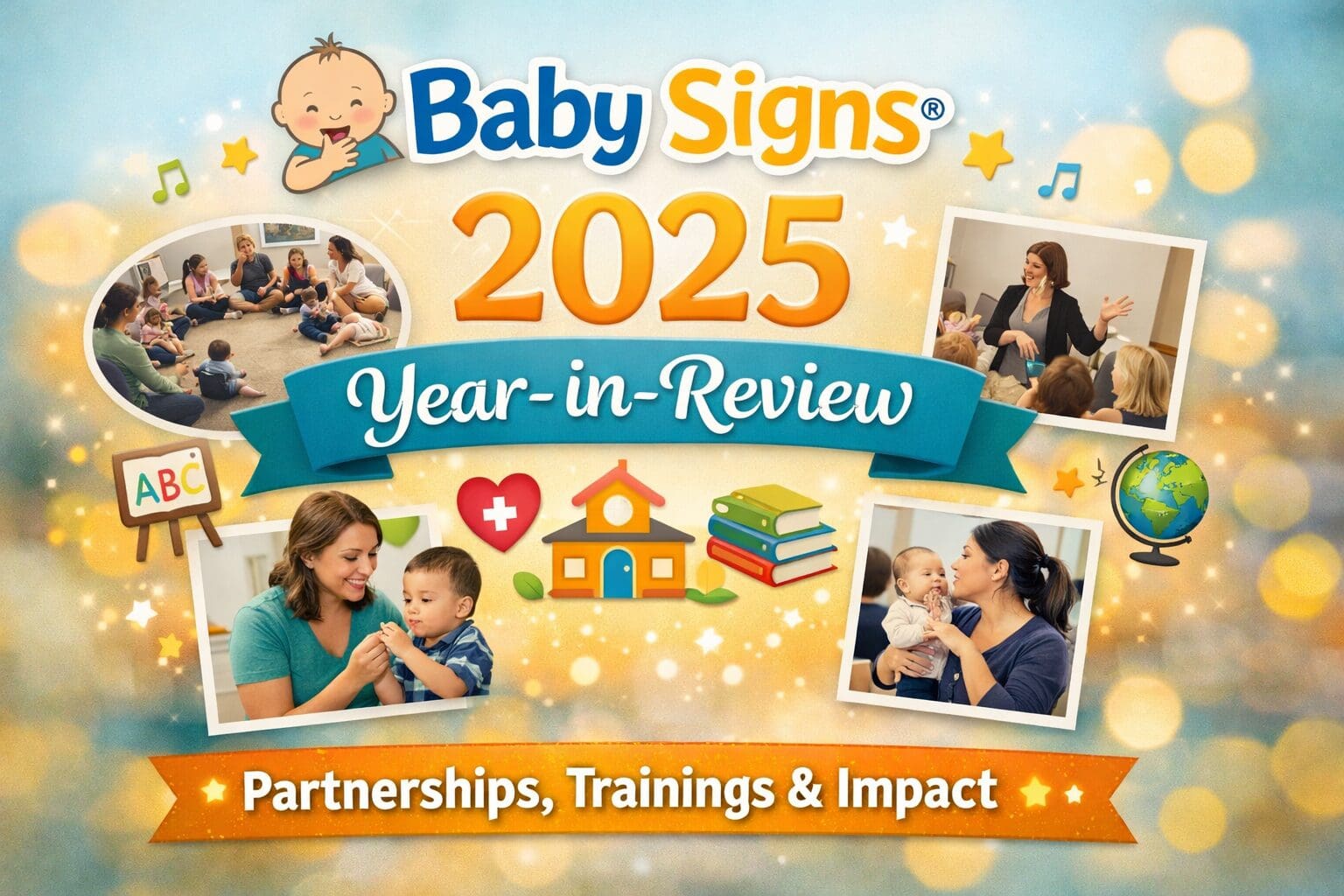
Infant Sign Language: A Helpful Tool for Communication
Infant sign language is a way for babies and toddlers to communicate before they are able to speak. It can be a helpful tool for both babies and parents, as it can help to reduce frustration and promote bonding.
Babies are born with the ability to learn language, and they can start to learn signs as early as 6 months old. By signing to your baby, you can help them to develop their language skills and learn about the world around them.
There are many benefits to using infant sign language. Some of these benefits include:
- Reduces frustration: Babies who can sign can communicate their needs and wants, which can help to reduce frustration.
- Promotes bonding: Signing can help to promote bonding between babies and their caregivers.
- Can help babies learn to speak earlier: Studies have shown that babies who are exposed to sign language may learn to speak earlier than babies who are not exposed to sign language.
- Can help babies with special needs: Sign language can be a helpful tool for babies with special needs, such as hearing loss or autism.
If you are interested in teaching your baby sign language, there are many resources available to help you. You can find books, websites, and even classes that can teach you the basics of sign language.
Here are a few tips for teaching your baby sign language:
- Start early: Babies can start to learn signs as early as 6 months old.
- Be consistent: The more you sign, the more your baby will learn.
- Break down signs into small movements: Babies may have difficulty making complex movements, so break down signs into smaller, easier movements.
- Be patient: It may take some time for your baby to learn signs.
With a little patience and consistency, you can teach your baby sign language and help them to communicate their needs and wants.
Here are some basic signs that you can start teaching your baby:
- More: Tap fingertips together. Watch this video clip to learn the sign for “more”.
- Milk: Open and close your fist as if you’re milking a cow. Download this free poster with the sign for “milk”
- Eat: Touch your fingertips to your lips.
These are just a few basic signs that you can start teaching your baby. With a little practice, you can help your baby to learn sign language and communicate their needs and wants.
-
Welcome to the Baby Signs® Blog!
We are so excited to have you here. This blog is dedicated to providing information and resources for parents who are interested in teaching their babies basic sign language. We know that teaching your baby sign language can be a great way to help them communicate their needs and wants, build a stronger bond with…
-
2025 Year in Review: Celebrating a Year of Connection, Growth, and Communication
As 2025 comes to a close, we’re taking a moment to reflect on a year filled with meaningful connections, expanded partnerships, and countless moments of communication shared between babies, families, educators, and professionals around the world. This year reaffirmed what has always been at the heart of the Baby Signs® Program: when babies are given…
-
Winter-Themed Communication: Baby Signs® for the Season
As the weather turns colder and days get shorter, families find themselves navigating new routines, new environments, and-sometimes-new challenges. Winter brings big feelings for little ones: excitement, sensory overload, chilly transitions, bundling up, and more time indoors. It’s a perfect season to lean into early communication. The Baby Signs® Program gives babies and toddlers simple,…
-
Why the Baby Signs® Program Is the Perfect Gift for New Parents This Season
Choosing the perfect gift for new parents can feel overwhelming-especially when you want to give something meaningful, useful, and long-lasting. This season, thousands of families around the world are turning to the Baby Signs® Program, and it’s easy to see why. Instead of clothes babies outgrow or toys that get forgotten, Baby Signs® offers something…
-
Welcome to the Baby Signs® Blog!
We are so excited to have you here. This blog is dedicated to providing information and resources for parents who are interested in teaching their babies basic sign language. We know that teaching your baby sign language can be a great way to help them communicate their needs and wants, build a stronger bond with…
-
2025 Year in Review: Celebrating a Year of Connection, Growth, and Communication
As 2025 comes to a close, we’re taking a moment to reflect on a year filled with meaningful connections, expanded partnerships, and countless moments of communication shared between babies, families, educators, and professionals around the world. This year reaffirmed what has always been at the heart of the Baby Signs® Program: when babies are given…
-
Winter-Themed Communication: Baby Signs® for the Season
As the weather turns colder and days get shorter, families find themselves navigating new routines, new environments, and-sometimes-new challenges. Winter brings big feelings for little ones: excitement, sensory overload, chilly transitions, bundling up, and more time indoors. It’s a perfect season to lean into early communication. The Baby Signs® Program gives babies and toddlers simple,…
-
Why the Baby Signs® Program Is the Perfect Gift for New Parents This Season
Choosing the perfect gift for new parents can feel overwhelming-especially when you want to give something meaningful, useful, and long-lasting. This season, thousands of families around the world are turning to the Baby Signs® Program, and it’s easy to see why. Instead of clothes babies outgrow or toys that get forgotten, Baby Signs® offers something…




